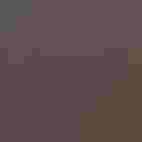Painted Redstart
At a Glance
The incredible Painted Redstart, a specialty of the southwestern mountains, is perhaps the most beautiful of the warblers. It almost seems to be consciously showing off as it flits through the oaks, turning this way and that, posturing with its wings and tail partly spread. Unlike most of our northern warblers, females of this species are just as showy as males. Painted Redstarts build their nests on the ground, on steep hillsides in pine-oak woods.
All bird guide text and rangemaps adapted from Lives of North American Birds by Kenn Kaufman© 1996, used by permission of Houghton Mifflin Harcourt Publishing Company. All rights reserved.
Category
Perching Birds, Wood Warblers
IUCN Status
Least Concern
Habitat
Arroyos and Canyons, Forests and Woodlands, Shrublands, Savannas, and Thickets
Region
California, Southwest, Texas
Behavior
Direct Flight, Flitter
Population
600.000
Range & Identification
Migration & Range Maps
Probably permanent resident over most of range, but most of those in our Southwest depart in fall, returning early in spring. A few remain through the winter. Rarely strays far afield, having wandered as far as British Columbia and Massachusetts.
Description
5" (13 cm). An active, flashy warbler. White outer tail feathers and wing patch, red chest, otherwise mostly black. Juveniles may lack red at first.
Size
About the size of a Sparrow
Color
Black, Red, White
Wing Shape
Rounded
Tail Shape
Rounded, Square-tipped
Songs and Calls
Song is a rich, chanting cheery cheery cheery chew. Call is a cheereo, different from calls of other warblers.
Call Pattern
Falling, Undulating
Call Type
Chirp/Chip, Whistle
Habitat
Oak canyons, pine-oak forests in mountains. Breeds in mixed oak and pine forests and in streamside woods of steep canyons above 5,000'. Prefers to nest under oaks, sycamores, ashes, maples, junipers, and pines. In winter in the tropics, found most often in dry open woodlands of oak and pine.
Sign up for Audubon's newsletter to learn more about birds like the Painted Redstart
Behavior
Eggs
Normally 3-4. Creamy white, with fine spots of brown. Incubation is by female only, 13-14 days.
Young
Fed by both parents. Young leave the nest about 9-13 days after hatching. Often 2 broods per year.
Feeding Behavior
Forages actively at all levels, from ground to treetops. With wings and tail partly spread, hops quickly among branches, searching for insects. Often hovers while taking items from foliage, or darts out to catch insects in flight. May move up and down vertical trunks, clinging to bark. Sometimes joins mixed flocks with other birds, but often forages in pairs or alone.
Diet
Mostly insects. Diet not known in detail, but undoubtedly eats mostly insects, including caterpillars, flies, and small beetles. Also comes to hummingbird feeders to drink sugar-water.
Nesting
Males arrive on nesting territories 2-10 days before the females. During courtship, male chases female, and sometimes the pair sing duets together. Some males have more than one mate. Nest site selected by both members of pair. Placed on ground in a shady spot on steep slope, often on walls of narrow canyons, on low cliffs, beneath overhanging banks, or under a small boulder. Usually near a small stream. Nest is hidden in a shallow depression or crevice. Shallow, open cup, constructed by female, made of grass, pine needles, leaves, bark; thinly lined with fine grass and hair.
Conservation
Conservation Status
Still common in its limited U.S. range. Could be vulnerable to loss of habitat in the tropics.
Climate Threats Facing the Painted Redstart
Choose a temperature scenario below to see which threats will affect this species as warming increases. The same climate change-driven threats that put birds at risk will affect other wildlife and people, too.








